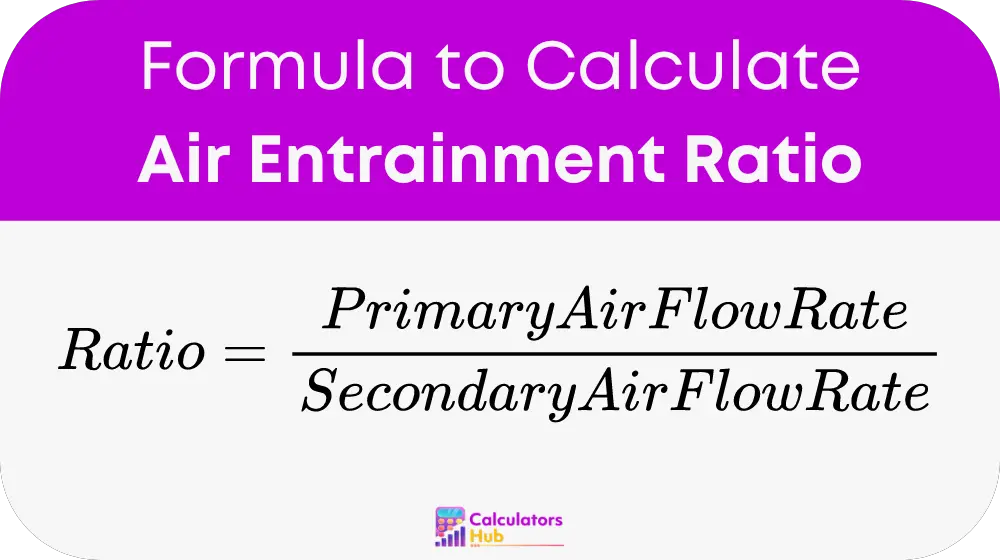The Air Entrainment Ratio Calculator is a critical tool for engineers and technicians involved in the design and maintenance of combustion systems, HVAC, and environmental management. This calculator helps determine the ratio of air volume flow between two streams, typically the primary (directly involved in combustion or core process) and secondary (auxiliary air that supports or completes the process) air flows. Accurately calculating this ratio is essential for optimizing the efficiency of combustion in industrial burners, boilers, and furnaces, as well as ensuring adequate ventilation and air quality in buildings.
Formula of Air Entrainment Ratio Calculator
The formula for calculating the air entrainment ratio is straightforward but crucial for ensuring the proper mixing of air streams in various engineering applications:

Detailed Steps:
- Primary Air Flow Rate (Qp): Measure the flow rate of the primary air stream, which is directly involved in the core process, in cubic meters per second (m³/s) or cubic feet per minute (CFM).
- Secondary Air Flow Rate (Qs): Measure the flow rate of the secondary air stream, which supports or enhances the primary air, using the same units as the primary air flow rate.
This calculation provides the ratio of primary to secondary air. Indicating how much secondary air is drawn into the process relative to the primary air, a critical factor in system efficiency and environmental compliance.
General Terms Table
| Term | Definition |
|---|---|
| Air Entrainment Ratio | The ratio of the primary air flow rate to the secondary air flow rate. |
| Primary Air Flow Rate (Qp) | The volume flow rate of air primarily involved in the process, measured in cubic meters per second (m³/s) or cubic feet per minute (CFM). |
| Secondary Air Flow Rate (Qs) | The volume flow rate of air that supports or completes the primary air, measured in the same units. |
Example of Air Entrainment Ratio Calculator
For example. If a furnace uses a primary air flow of 150 CFM for combustion and has an auxiliary secondary air flow of 50 CFM used for cooling and controlling combustion environment:
- Primary Air Flow Rate (Qp) = 150 CFM
- Secondary Air Flow Rate (Qs) = 50 CFM
- Air Entrainment Ratio = 150 CFM / 50 CFM = 3
This means that for every unit of secondary air, there are three units of primary air involved in the process. Reflecting the air management strategy of the system.
Most Common FAQs
Calculating the air entrainment ratio is essential for designing efficient combustion systems. Ensuring complete combustion, reducing emissions, and managing thermal outputs effectively.
Proper air entrainment ensures optimal mixing of air streams, which is crucial for achieving desired temperature profiles. Maximizing energy efficiency, and minimizing pollutants.
Yes, in HVAC systems, the air entrainment ratio affects ventilation effectiveness. Which directly impacts air quality and occupant comfort within buildings.